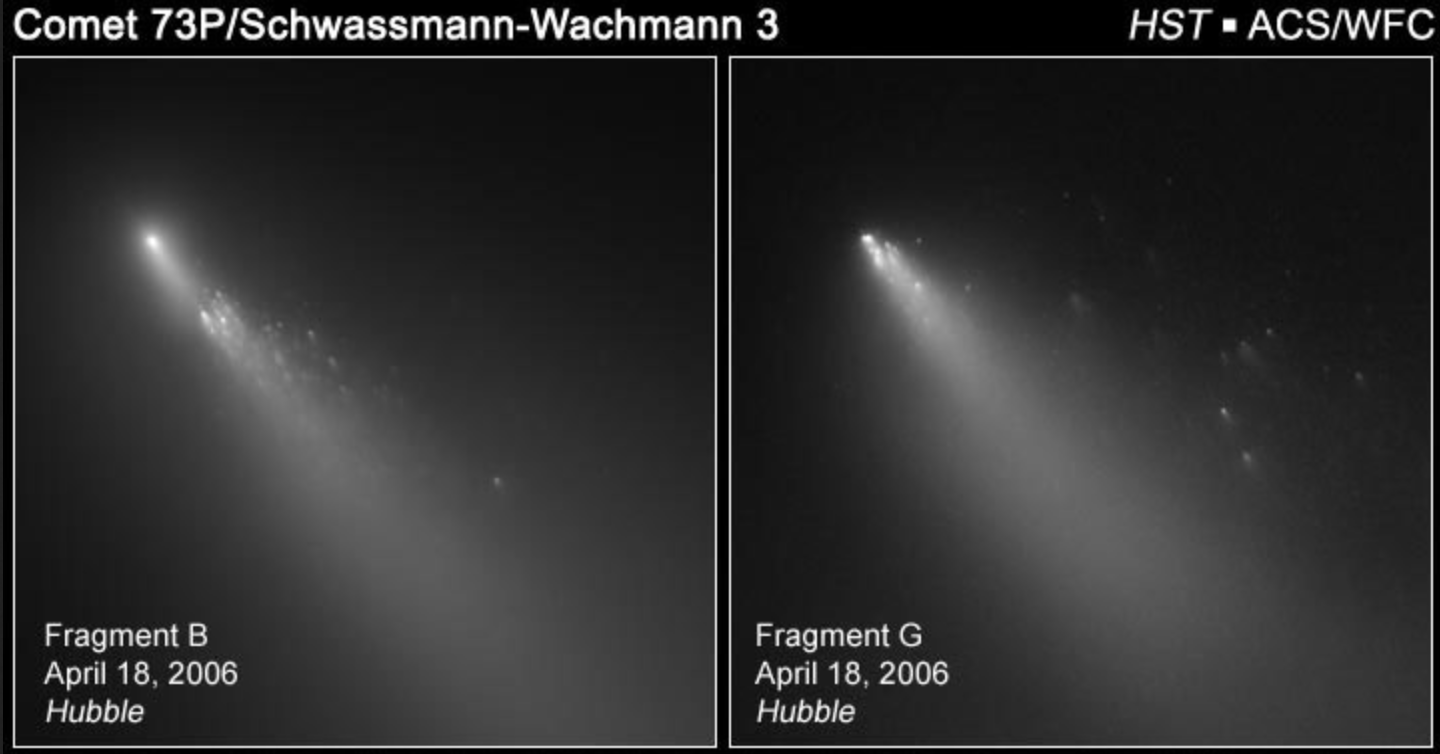As a periodic meteor shower, the Tau Herculids tend to be quite boring, but astronomers have reason to believe that this year’s version might be different. Here’s what you need to know about when, where, and how to watch this promising celestial spectacle.
The Tau Herculids meteor shower happens each year between May 19 and June 19, but virtually no one tends to notice. This meteor shower is produced by debris from Comet 73P/Schwassmann–Wachmann 3, and it’s typically very quiet, but the situation is a bit different this year. To understand why, we have to go back 27 years.
In 1995, comet Schwassmann-Wachmann 3 broke apart into dozens of pieces. Tonight and into the early morning of May 31, Earth will travel through the comet’s debris tail — including, potentially, the parts of the tail containing the fragments. This sets the stage for a possible outburst, but only if a sufficient amount of cometary debris reaches Earth and that this debris is moving fast enough to create a light show in the atmosphere. Comet 73P/Schwassmann-Wachmann 3 was discovered in the 1930s and it orbits the Sun once every 5.4 years.

“If the fragments…were ejected with speeds greater than twice the normal speeds — fast enough to reach Earth — we might get a meteor shower,” according to a NASA press release. Excitingly, observations made with NASA’s Spitzer Space Telescope in 2009 “indicate that at least some fragments are moving fast enough,” and “this is one reason why astronomers are excited,” the space agency added.
An unusually active meteor shower may happen tonight, or it might not. That you will want to stay up and catch this promising display is warranted, however, as the next Tau Herculids storm won’t happen until 2049, according to research from Western University in Ontario, Canada. And even then the storm may not rival what could happen tonight, as dust tends to dissipate over time.
Observers in North America will have the best view, though it will depend on clear and dark skies. The meteor shower will peak at 1:00 a.m. ET on the morning of May 31, or 10:00 p.m. PT on the evening of May 30. People living in areas where the sky will be bright, such as in Australia, can watch the meteor shower online at the Virtual Telescope Project.
The fragments are expected to move slowly across the sky and produce faint meteors. The debris will come from the direction of the Boötes constellation, but you don’t necessarily have to look towards that exact spot. Astronomer Peter Brown from Western University said as many as 30 to 40 meteors may be visible each hour, but it could be more.
“Some people say if the comet break-up gets here, you’ll see thousands an hour, but that’s massively speculative,” Brown told the CBC. “That’ll need lots of big centimetre-sized objects…I mean, yeah, it’d be spectacular, but I think that’s like a lotto ticket sort of thing. But I hope I’m wrong.”
The intensity of meteor showers is difficult to predict, but tonight’s Tau Herculids, even if a dud, is still important as the resulting data could help astronomers make more reliable predictions in the future.
